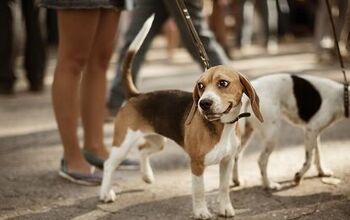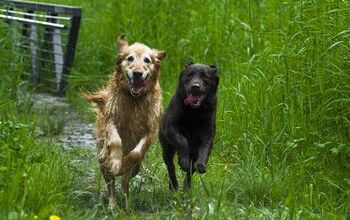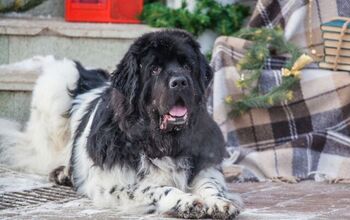Teach Your Dog To Be A Canine Good Citizen

Your dog knows the basics when it comes to obedience, but it’s time to take it to the next level. Your dog can be a Canine Good Citizen! Sure, you may think your pup is already pretty awesome, but you can make sure that your dog has all the good manners to be considered a Canine Good Citizen. Plus, you’ll get a fancy-schmancy certificate to hang on the wall and brag about.
What Is The Canine Good Citizen Program?
Set up by the American Kennel Club in 1989, the Canine Good Citizen Program (CGC) rewards dogs that have good manners both at home and in the community. To complete the program, your dog must pass the two-part, 10-step CGC test. Not only will this program teach your dog good manners, but it also focuses on responsible dog ownership for you.
Reasons to take the Canine Good Citizen Test
Of course, better doggy manners and a certificate from the American Kennel Club are enticing reasons, but there are more benefits that come with it. If you’re just starting out on obedience training, it’s a dynamite place to start. Once you start the training process, the bond between you and your dog will grow stronger. And kids can get into the fun too – there are club across North American that offer courses just for kids and canines.
By performing and mastering the steps in the Canine Good Citizen program, you’ll notice your dog picking up good habits. These include responding well to household routines, having good manners in around people and other dogs, and loving their owner that much more (if that’s even possible!). And there’s no telling where this will lead you. After you finish up with the Canine Good Citizen program, there’s nothing stopping you from tackling agility, tracking, and performance events.
You may think your pup is already pretty awesome, but you can make sure that your dog has all the good manners to be considered a Canine Good Citizen.
What Dogs Can Participate?
Any dog can be a Canine Good Citizen! Pure and mix breeds are welcome to take the test. And there are no age limits. Young pups and senior pooches are eligible. Dogs must be old enough to have received necessary immunizations (such as rabies vaccines).
Depending on where your dog takes the test, there may be few exceptions relating to participation. If you take it at an AKC show or with a dog training school, you’ll have to abide by the regulations set out by the organization.
Where Do You Go For The Test?
Countries all over the world offer the training and testing for the course. Breed and dog clubs, dog training schools and community clubs offer Canine Good Citizen training and can administer the official test. As well, dogs can be tested during AKC shows.
Do you think your dog has what it takes to be a Canine Good Citizen? Are you interested in learned more? Learn more about it at the American Kennel Club’s website. You can see the full list of steps and requirements after the jump. And tell us how many of the 10 steps your dog can already do by leaving a comment.
AKC Canine Good Citizen Test
Test 1: Accepting a friendly stranger
Test 2: Sitting politely for petting
Test 3: Appearance and grooming
Test 4: Out for a walk (walking on a loose lead)
Test 5: Walking through a crowd
Test 6: Sit and down on command and Staying in place
Test 7: Coming when called
Test 8: Reaction to another dog
Test 9: Reaction to distraction
Test 10: Supervised separation

Amy Tokic, Editor of PetGuide.com, is a passionate animal lover and proud pet parent of Oscar, a Shih Tzu/Chihuahua cross, and Zed, a Japanese Chin. Her love of animals began in kindergarten, when she brought her stuffed dog Snoopy into class with her every day. Now, she writes about her adventures in pet ownership and tirelessly researches products, news and health related issues she can share with other animal enthusiasts. In her free time, Amy loves perusing used book and record stores, obsessing over the latest pet products available and chasing squirrels with wild abandon (a habit attributed to spending too much time with her pooches).
More by Amy Tokic























